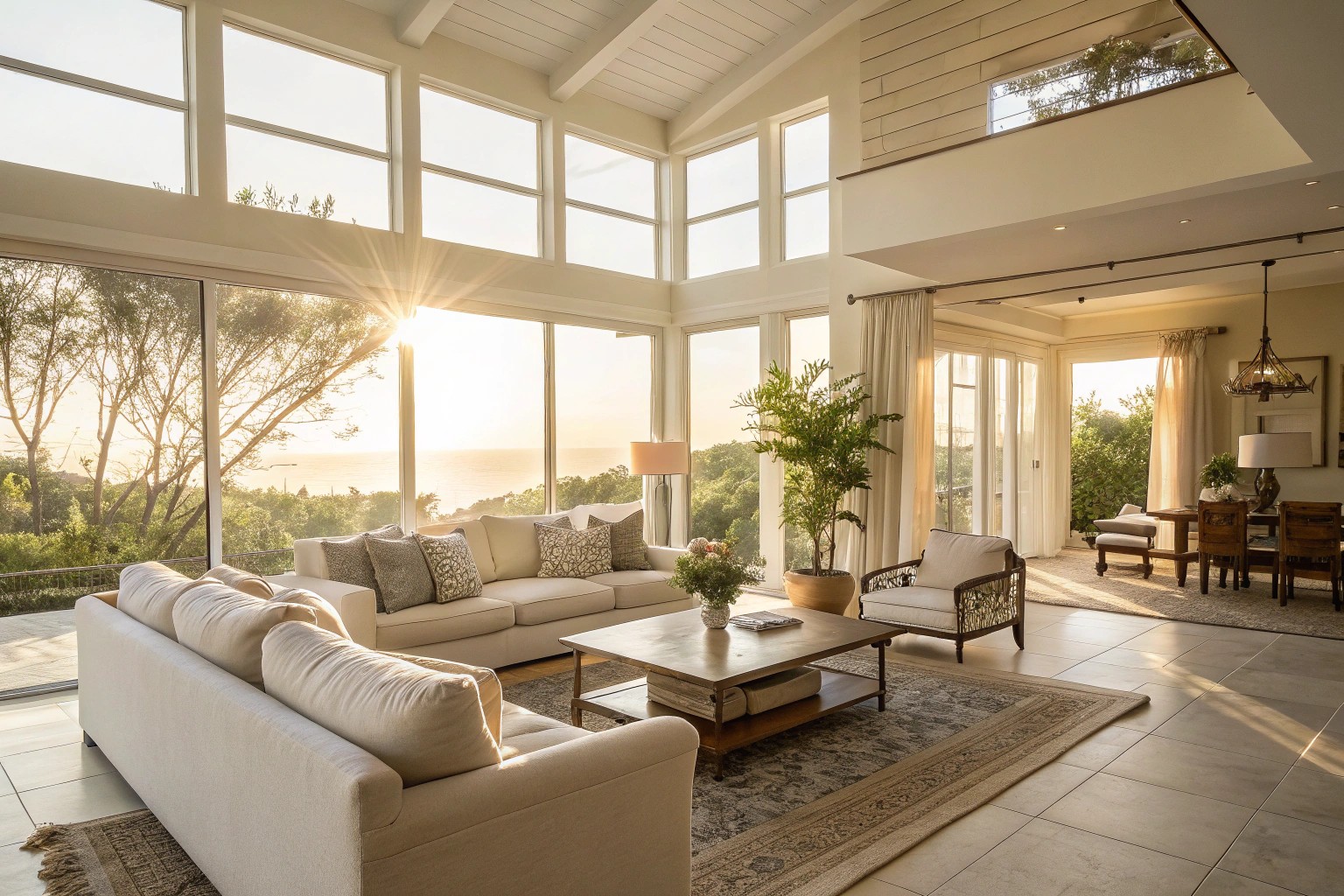Natural light transforms spaces in ways that artificial lighting simply cannot replicate, yet many homes struggle with areas that feel perpetually dim and uninviting. The key to brightening these challenging spaces lies not just in adding more windows, but in understanding how light behaves and implementing strategic design choices that amplify and redirect available daylight throughout your home.
Understanding Light Behavior in Interior Spaces
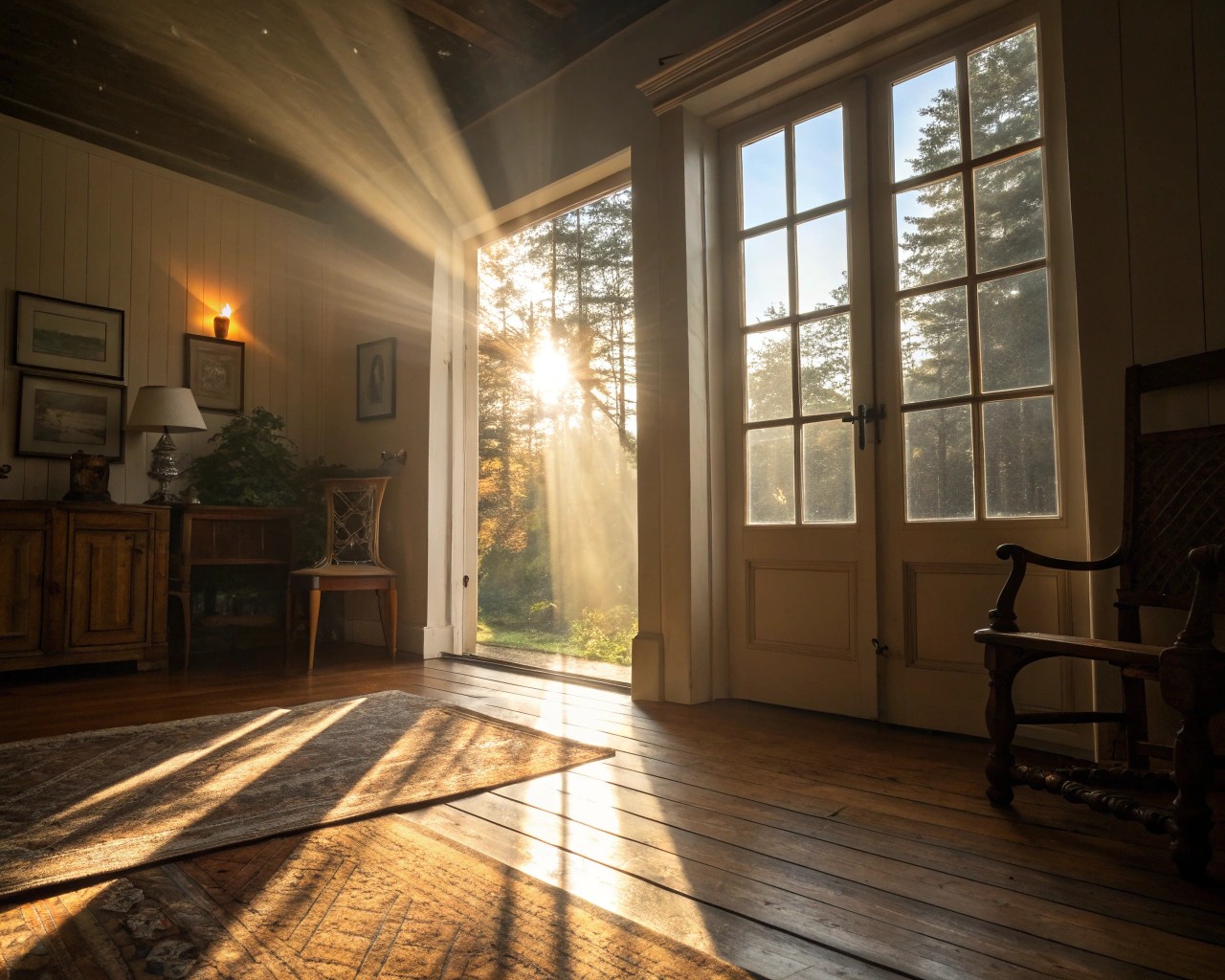
Light operates on predictable principles that we can harness to our advantage. When sunlight enters a space, it can be absorbed, reflected, or transmitted through various surfaces and materials. Dark surfaces absorb light, making spaces feel smaller and gloomier, while light-colored and reflective surfaces bounce illumination around a room, effectively multiplying the impact of available natural light.
The science behind light reflection is straightforward yet powerful. Reflective surfaces act almost like mirrors for natural light, and when sunlight streams through windows and doors, these surfaces bounce light upwards and throughout the room, dramatically increasing overall brightness. This principle becomes particularly valuable in spaces with limited window access or north-facing orientations that receive less direct sunlight.
Understanding the angle of incidence and reflection helps optimize placement of reflective elements. Light hits surfaces at specific angles and bounces off at corresponding angles, which means strategic positioning of mirrors, glossy finishes, and light-colored materials can direct illumination exactly where it’s needed most.
Strategic Use of Reflective Surfaces
Mirrors as Light Amplifiers
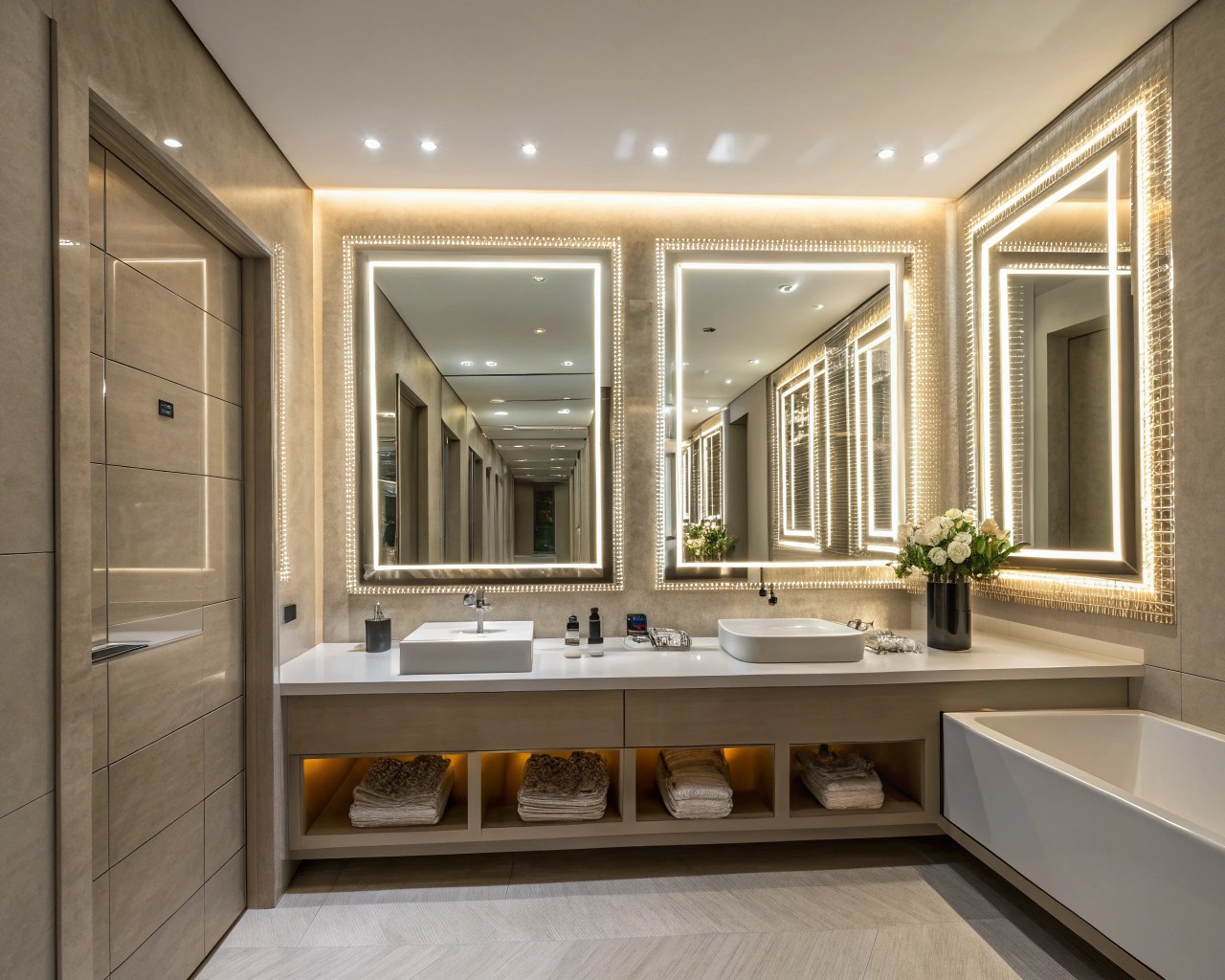
Mirrors represent the most powerful tool for enhancing natural light in dark spaces. When placed directly across from windows, mirrors reflect sunlight back into rooms while creating the illusion of additional windows, making spaces appear more expansive. I’ve observed that this technique works particularly well in narrow hallways and small bedrooms where window coverage is limited.
The placement strategy matters significantly. Mirrors positioned adjacent to windows catch sunlight at angles, spreading illumination throughout rooms more effectively than centered placement. For maximum impact, consider these specific applications:
- Living areas: Large mirrors opposite main windows double available light
- Hallways: Mirrors at corridor ends pull light into otherwise dark passages
- Bathrooms: Multiple mirrors create layered reflection effects
- Dining rooms: Mirrored furniture or wall panels amplify ambient lighting
Metallic and Glossy Finishes
Beyond traditional mirrors, incorporating metallic accents and glossy finishes amplifies natural light through subtle reflection. Silver, gold, brass, and copper elements in picture frames, light fixtures, and decorative objects contribute to overall brightness while adding sophisticated design elements. Glossy paint finishes, particularly on ceilings, help distribute light more evenly than matte alternatives.
Reflective tile flooring creates dramatic light enhancement, particularly in kitchens and bathrooms. Porcelain and ceramic tiles with polished finishes act almost like mirrors for natural light, while certain types of polished natural stone like marble provide similar benefits. The color selection amplifies this effect – lighter colors in shades of white, cream, or light gray naturally reflect more light than darker alternatives.
Color Theory for Light Enhancement
Wall and Ceiling Strategies
Light-colored walls and ceilings form the foundation of any light-bouncing strategy. White, beige, taupe, and pastel colors reflect sunlight around rooms, making spaces appear larger and airier. The finish selection plays a crucial role – satin finish paints help bounce light around rooms more effectively than flat finishes while avoiding the glare potential of high-gloss options.
Ceiling color significantly impacts spatial perception. Light-colored ceilings create a sense of height and openness, preventing spaces from feeling closed in or compressed. When working with challenging spaces, I recommend keeping ceilings at least two shades lighter than wall colors to maximize the vertical light reflection effect.
Floor Color Considerations
Floor color and material selection dramatically influences how light moves through a space. Light and neutral flooring options reflect more illumination upward, while dark floors tend to absorb available light. For existing dark floors, strategic use of pale-colored rugs or decorative stenciling can significantly improve light reflection without requiring complete flooring replacement.
The material finish matters as much as color. Glossy or semi-gloss floor finishes reflect more light than matte alternatives, creating brighter overall ambiance. However, balance is essential – excessively shiny surfaces can create glare issues that reduce comfort rather than enhance it.
Architectural Light Solutions
Clerestory Windows
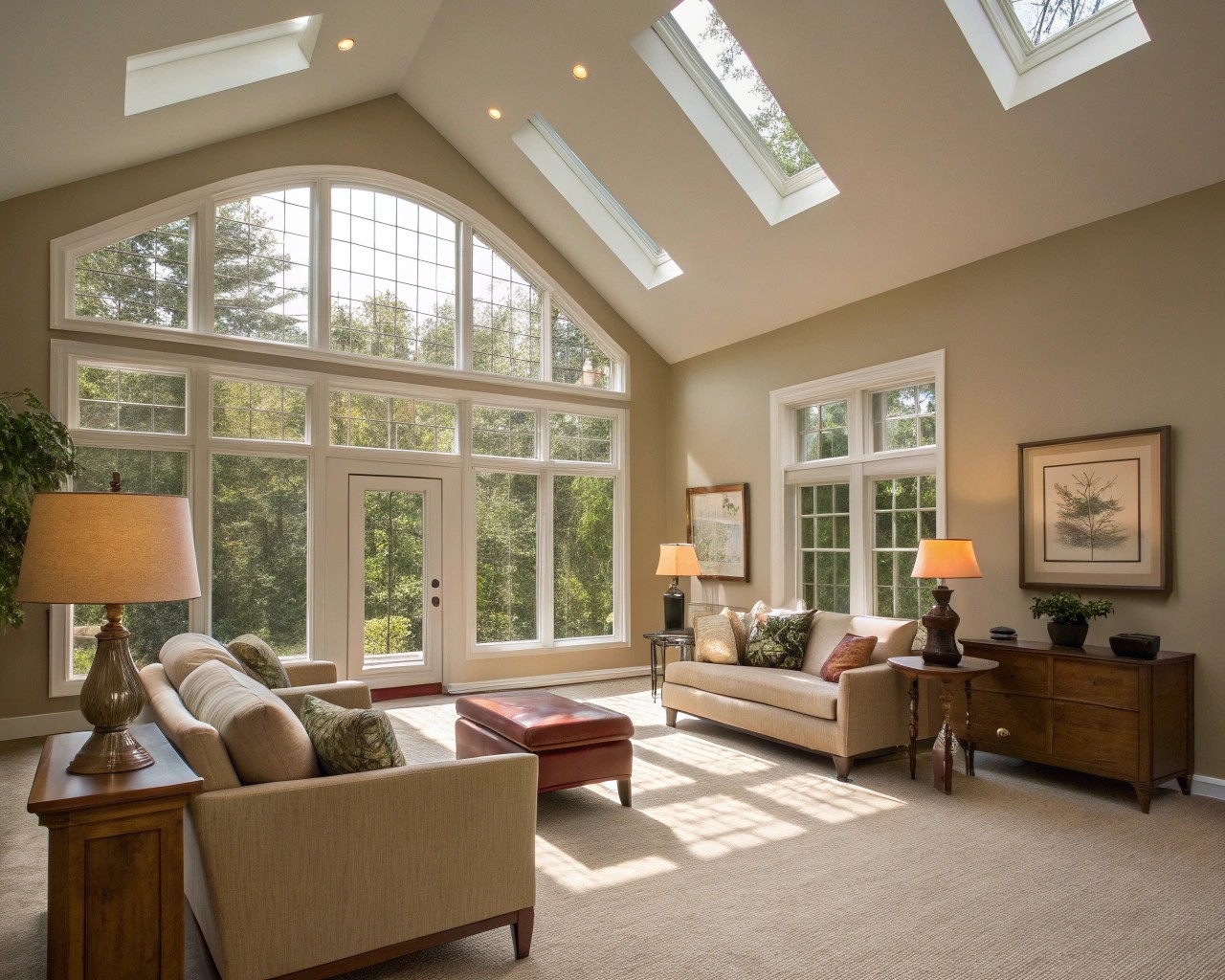
Clerestory windows represent one of the most effective architectural solutions for bringing natural light into challenging spaces. These windows, positioned above eye level on walls, capture sunlight throughout different parts of the day without compromising privacy. Unlike traditional windows, clerestory placement allows natural light to wash down walls from above, illuminating spaces more evenly and deeply.
The positioning strategy for clerestory windows requires careful consideration of building orientation and sun path. In the American climate context, north-wall placement provides consistent light without direct sun exposure and associated heat gain. South-facing clerestory installations work well when properly shaded during summer months, allowing beneficial winter light while preventing excessive heat during warmer seasons.
Clerestory windows offer additional benefits beyond light enhancement:
- Privacy maintenance: High placement prevents views from outside
- Ventilation opportunities: Operable versions create natural convection with lower windows
- Architectural interest: Adds visual drama to interior spaces
- Year-round functionality: Consistent light provision regardless of season
Skylights and Tubular Systems
Skylights provide direct overhead illumination that makes rooms feel more open and airy, particularly beneficial for spaces with limited wall window options like bathrooms and interior hallways. Traditional skylights work well in larger rooms, while tubular skylights offer solutions for smaller spaces where full skylight installation isn’t practical.
Tubular skylights operate through a rooftop dome that captures sunlight from all angles, directing it down through a highly reflective tube lined with specialized materials. The light diffuses into rooms through decorative ceiling fixtures, creating soft, natural illumination even in windowless spaces. These systems provide significant natural light while requiring minimal structural modifications compared to traditional skylights.
Modern skylight options include advanced features that enhance functionality:
- UV protection: Filters block harmful ultraviolet rays
- Glare control: Adjustable shades or tints manage brightness
- Energy efficiency: Reduced reliance on artificial lighting
- Weather protection: Sealed designs prevent moisture issues
Light Wells and Interior Courtyards
Light wells represent architectural solutions for bringing natural light into interior areas that would otherwise remain dark and unventilated. These unroofed external spaces within building volumes allow sunlight to reach internal areas while providing central open space for windows. Light wells lined with glazed materials increase sunlight reflection within the space, maximizing illumination effectiveness.
This approach works particularly well in urban environments where traditional window placement faces limitations due to neighboring buildings or lot constraints. Light wells create the illusion of outdoor views while providing practical illumination solutions for otherwise challenging interior areas.
Window Treatment Optimization
Sheer Curtains and Light-Filtering Options
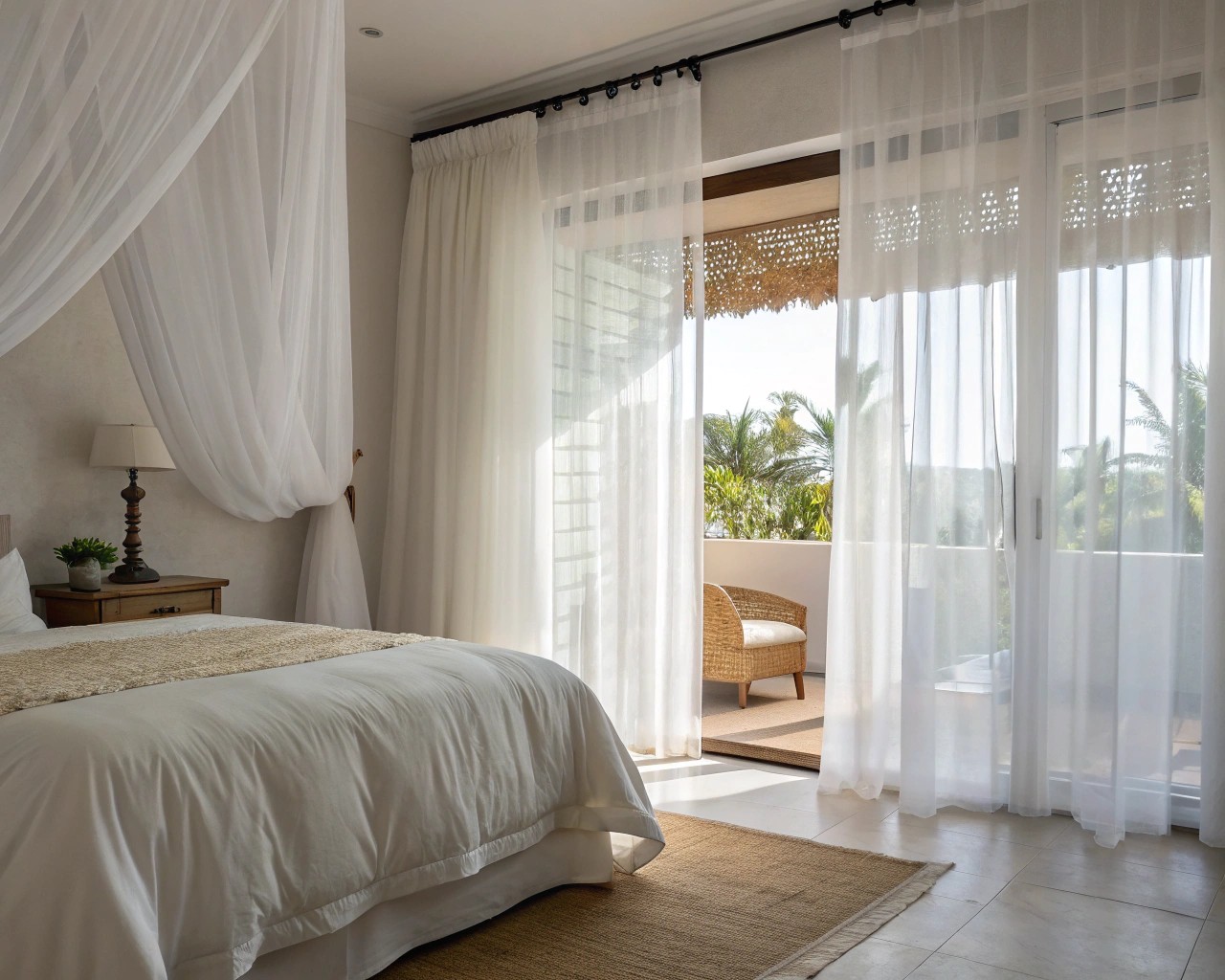
Sheer curtains provide an ideal balance between privacy and light transmission, allowing natural light to filter through while maintaining visual barriers. Unlike heavy drapes that block sunlight entirely, sheer materials diffuse illumination, creating soft, inviting glows throughout rooms while reducing harsh glare from direct sunlight.
The light diffusion effect of sheer curtains enhances natural brightness without overwhelming spaces. This filtered approach helps reduce shadows and improves overall lighting quality, making rooms appear more vibrant and comfortable. Additionally, sheer treatments maintain connections with outdoor environments, offering unobstructed views while providing necessary privacy.
Color selection amplifies sheer curtain effectiveness. Light colors like white or pastels enhance light transmission and reflection, while still providing adequate coverage for privacy needs. For spaces requiring variable light control, layering sheer curtains with blackout options allows adjustment throughout different times of day and seasons.
Glass Door Applications
Glass doors maximize light transmission between spaces while maintaining functional separation. Interior glass doors brighten hallways and shared areas without compromising room division, creating more open, modern feelings throughout homes. Frosted or tinted glass provides privacy while still allowing light passage, making this approach suitable for various interior applications.
Sliding glass doors work particularly well for patio and balcony access, bringing outdoor light deep into interior spaces. The large glass surface area maximizes light transmission while providing easy access to outdoor areas during favorable weather conditions.
Advanced Light Management Techniques
Light Shelves and Reflection Systems
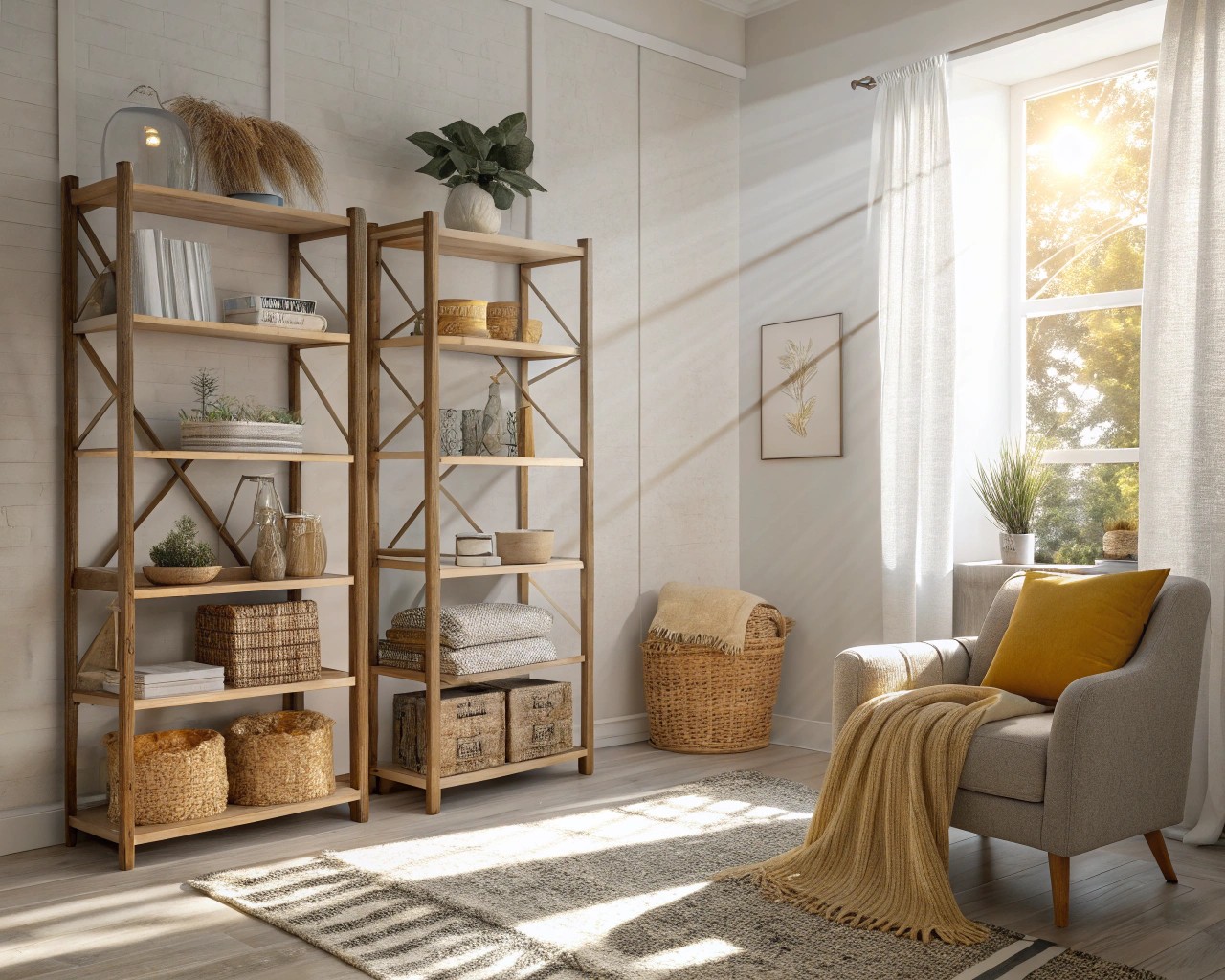
Light shelves represent sophisticated daylighting solutions that redirect natural light deeper into interior spaces. These horizontal surfaces, positioned at window heights, bounce incoming sunlight toward ceilings, which then reflect illumination throughout rooms. Internal light shelves prove easier to maintain than external versions, though they require specific ceiling heights for optimal performance.
Research indicates that internal light shelves work most effectively in rooms with ceiling heights of 4.5 meters or higher during summer and mid-season periods. Angle control mechanisms allow adaptation to changing external conditions throughout the day and seasons, maximizing light capture effectiveness. While winter performance may be limited, the overall improvement in indoor light uniformity makes light shelves valuable additions to challenging spaces.
Strategic Lighting Integration
Combining natural light enhancement with carefully planned artificial lighting creates comprehensive illumination strategies. Under-cabinet lighting in kitchens and under-mirror lighting in bathrooms provides supplemental brightness that works with natural light to improve overall room ambiance. This approach helps maximize perceived natural light by filling in shadow areas and maintaining consistent illumination levels throughout varying daylight conditions.
LED rod lighting and pendant fixtures work well in dark wardrobes, dressing rooms, and interior spaces where natural light access remains limited. The key lies in selecting warm-toned artificial light that complements rather than competes with available natural illumination.
Outdoor Strategies for Interior Light
Reflective Garden Elements
Garden design significantly impacts interior light levels, particularly for ground-floor spaces and areas adjacent to outdoor environments. Reflective surfaces in outdoor spaces can bounce additional sunlight toward windows and glass doors, amplifying natural light transmission into interior areas.
Polished metal garden elements, reflective water features, and strategically placed mirrors create elegant outdoor reflective systems. Stainless steel, aluminum, and copper garden sculptures and planters provide durable, weather-resistant options that enhance both garden aesthetics and interior light levels. Water features with smooth, mirror-like surfaces catch sunlight and reflect it toward building facades, creating dynamic light patterns that change throughout the day.
Plant Selection and Placement
Thoughtful plant selection and placement can enhance rather than obstruct natural light flow. Removing overgrown vegetation near windows increases available light, while strategic pruning of existing trees allows filtered sunlight rather than complete shade. Deciduous trees provide summer shade while allowing winter light penetration, creating seasonal light management that adapts to changing needs throughout the year.
Light-colored mulches and ground covers reflect more light toward buildings than dark alternatives. White, cream, or light gray decorative stones and paving materials near windows amplify available light while contributing to overall landscape design.
Implementation Strategies and Considerations
Prioritizing Interventions
Successful light enhancement requires systematic evaluation of existing conditions and strategic implementation of improvements. Begin with cost-effective color and finish modifications before considering major architectural changes. Painting walls and ceilings in light colors, adding strategic mirrors, and optimizing window treatments provide immediate improvements with modest investment.
Medium-term projects might include flooring updates, fixture replacements, and minor architectural modifications like interior glass doors. Major interventions such as skylights, clerestory windows, and light wells require significant planning and investment but provide transformative results for severely challenged spaces.
Balancing Light and Heat
Managing light enhancement without creating unwanted heat gain requires careful material selection and placement strategies. Reflective surfaces should redirect light without focusing it into concentrated beams that create hot spots or glare problems. Proper orientation consideration ensures light benefits without associated thermal challenges.
Using light-colored baffles and diffusion materials helps distribute light evenly throughout spaces while preventing harsh shadows and glare conditions. Double-glazed windows in skylight and clerestory applications avoid heat gain in summer and heat loss during winter months.
Measuring Success and Fine-Tuning
Evaluating light enhancement effectiveness involves both quantitative and qualitative assessments. Natural light levels change throughout seasons and weather conditions, so observations across extended periods provide more accurate performance indicators than single-day evaluations.
Consider how spaces feel during different times of day and various weather conditions. Successful light enhancement creates consistently bright, welcoming environments that feel connected to outdoor conditions without overwhelming occupants with glare or excessive contrast.
Document changes through photography at consistent times and lighting conditions to track improvement progress. This visual record helps identify which interventions provide the most significant benefits and guides future enhancement decisions.

